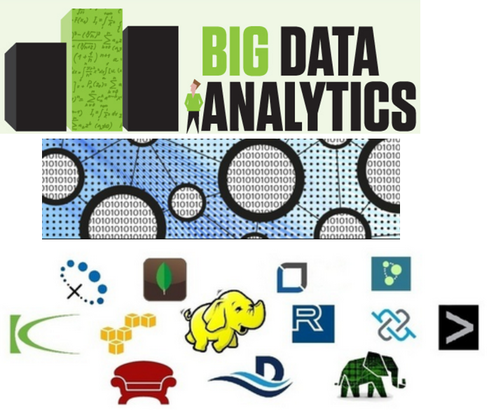Agriculture Dept. Turns To SDNAgriculture Dept. Turns To SDN
USDA's National Information Technology Center adopts software-defined networking in quest for "faster, better, cheaper" cloud services.


10 More Powerful Facts About Big Data
10 More Powerful Facts About Big Data (Click image for larger view and slideshow.)
Facing rising demand for cloud computing services, officials at the Agriculture Department's National Information Technology Center are turning to software-defined networking to cut costs and increase speed and flexibility in provisioning cloud services to federal customers.
NITC, an operational component of the USDA's office of the chief information officer, provides secure application and datacenter hosting, not only to agencies within USDA, but also to other agencies across the federal government.
In its latest expansion move, NITC is launching an infrastructure-as-a-service (IaaS) offering, which will be capable of furnishing virtual private datacenters within the cloud, complete with compute resources, storage, and virtual switching, routing, and firewalls. This infrastructure is based on OpenStack and its associated software components. For the networking layer, NITC is using VMware NSX network virtualization.
[TechAmerica Foundation says agencies need a common way to evaluate cloud providers. Read Feds Need Cloud Procurement Standards.]
"Faster, better, cheaper" are the new watchwords at NITC, and VMware seems to be the best, fastest, cheapest way to go, according to Rick Kundiger, chief of IT enterprise architecture at NTIC. NITC officials are already reaping benefits, he says.
"The flexibility [afforded by software-defined networking] has allowed us to create a design where we're going to bring in a customer by the end of this month, and we're not going to have to buy and/or modify any of the external network or security infrastructure," Kundiger told information Government. "So that already is a benefit."
Technology leaders at NITC are striving to meet the cloud-computing needs of USDA and other federal departments and agencies, which are under formal pressure on two IT fronts: to reduce the costs of datacenter hardware, software, and operations through the 2010 Federal Data Center Consolidation Initiative, and to comply with the Obama Administration's "Cloud First" policy, which mandates that agencies take full advantage of cloud computing to maximize capacity utilization, improve IT flexibility and responsiveness, and minimize costs. These mandates supply an underlying business driver for NITC to enhance its services.
As agencies weigh whether to migrate applications, data, or systems to a commercial or public cloud or to a private cloud, NITC needs to continuously improve its cloud services to make NITC a more attractive alternative, according to Kundiger.
"It's not that we're directly competing with [the commercial clouds] but we are competing in the sense that we need to provide a better feature set and capability to our customers to mimic what is going in the [public] cloud," he says. "[Potential customers] are always referencing things that you can find out on the dotcoms. They read the tech blogs, they see what's available out there, and they don't understand why they can't get that same thing within the federal government. And that's what we're bringing."
In addition to new features, NITC also boasts a higher level of security than many commercial clouds. Kundiger notes that most public cloud providers offer Federal Risk and Authorization Management Program (FedRAMP) moderate-level certification to government agencies, but NITC incorporates a higher baseline of security through standards required by the Federal Information Security Management Act (FISMA).
"FISMA high… has significantly more levels of control and security than FedRAMP moderate does. We are a FISMA-high certified datacenter, so we're more secure, and that's a benefit."
In moving to a virtualized network and ramping up new services such as IaaS, "the challenge was not only to design this new platform that we could use to provide a greater capability but to do it in a fashion that is FISMA-high certified so that it has all the necessary security," says Kundiger. "That's what I and the team that works for me have accomplished."
New standards, new security, new architectures. The Cloud First stars are finally aligning for government IT. Read the Cloud Hits Inflection Point issue of information Government Tech Digest today.
About the Author
You May Also Like






